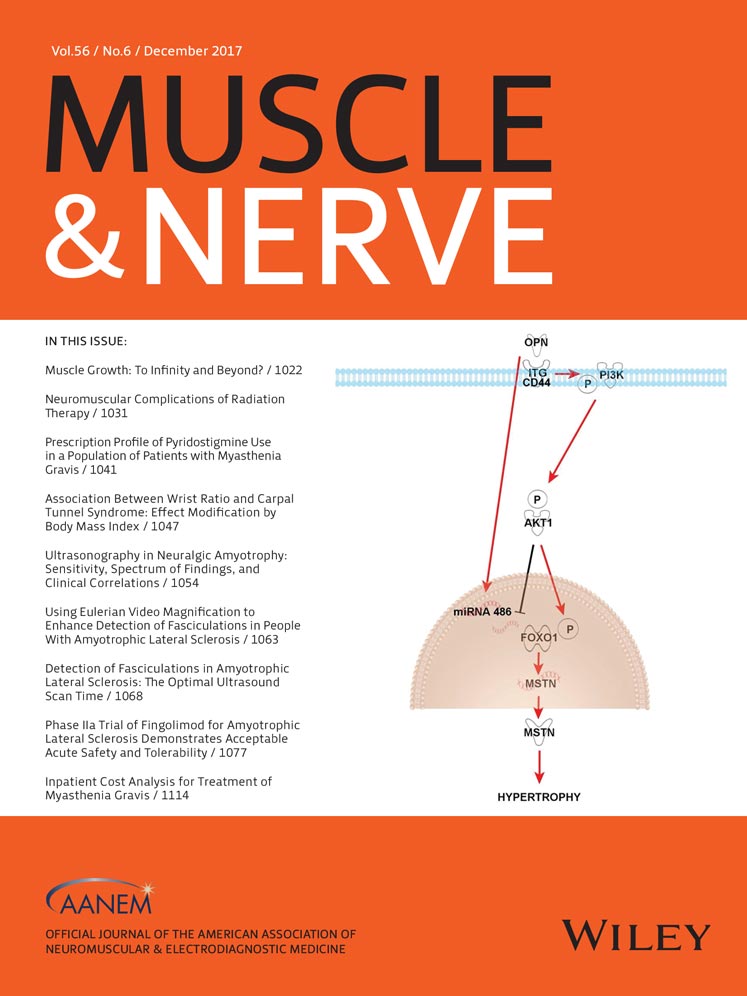Ultrasonography in neuralgic amyotrophy: Sensitivity, spectrum of findings, and clinical correlations
Funding: Supported by the National Brain Research Program of the Hungarian Government (KTIA_NAP_13-2-2014-0012 to Z.A. and C.A.).
ABSTRACT
Introduction
The aim of this study was to assess the value of ultrasonography in neuralgic amyotrophy.
Methods
Fifty-three patients with 70 affected nerves were examined with high-resolution ultrasound.
Results
The most commonly affected nerve was the anterior interosseous (23%). Ultrasonographic abnormalities in the affected nerves, rather than in the brachial plexus, were observed, with an overall sensitivity of 74%. Findings included the swelling of the nerve/fascicle with or without incomplete/complete constriction and rotational phenomena (nerve torsion and fascicular entwinement). A significant difference was found among the categories of ultrasonographic findings with respect to clinical outcome (P = 0.01). In nerves with complete constriction and rotational phenomena, reinnervation was absent or negligible, indicating surgery was warranted.
Discussion
Ultrasonography may be used as a diagnostic aid in neuralgic amyotrophy, which was hitherto a clinical and electrophysiological diagnosis, and may also help in identifying potential surgical candidates. Muscle Nerve 56: 1054–1062, 2017




